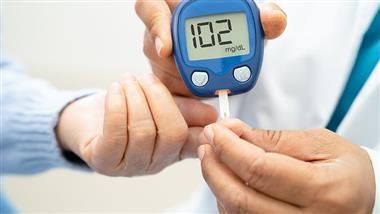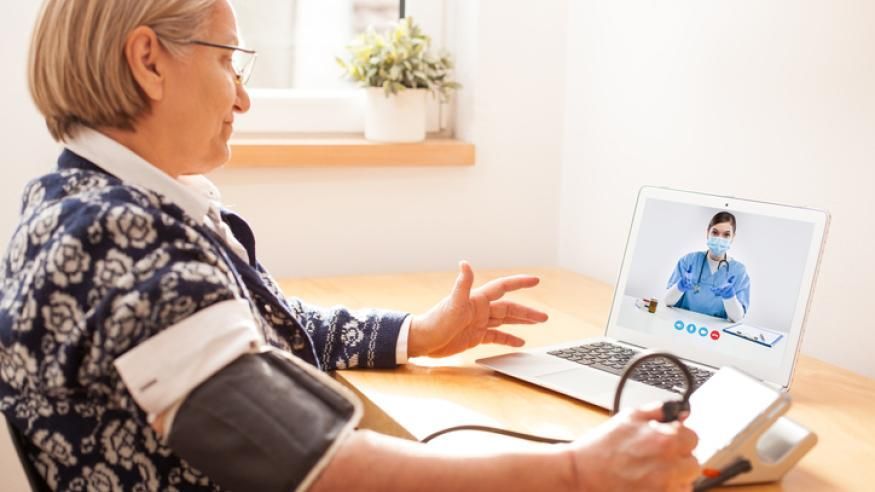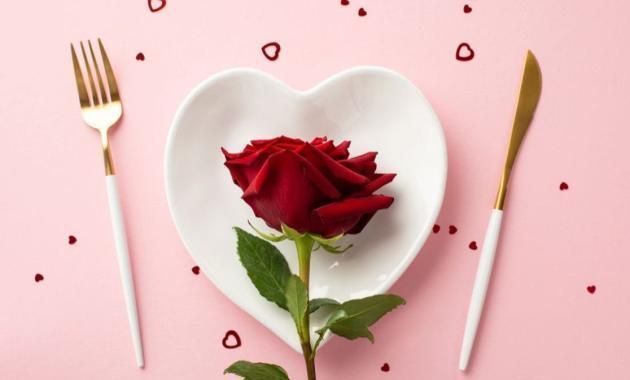Best Mother’s Day Gifts for Someone with Diabetes

With Mother’s Day 2023 coming up this Sunday, May 14, there’s no time to waste to find a special present for your special person with diabetes.
Looking to show your mom or another MWD (mom with diabetes) how much you appreciate them this Mother’s Day? Rest easy – diaTribe Learn has hand-picked more than two dozen great diabetes gifts for Mother’s Day 2023.
To make sure the presents pass the all-important reality check, we consulted some MWDs in the know including Jennifer Smith. Working primarily with women as the director of lifestyle and nutrition at Integrated Diabetes Services, Smith has type 1 diabetes herself and is a mother of two boys – Oskar, 10, and Konan, 6.
What is her key to nailing a Mother's Day gift for a mom with diabetes? “You have to know the person,” says Smith, “and the gift might have nothing to do with diabetes.”
Check out diaTribe’s roundup of thoughtful gifts for people with diabetes, if you want even more selection. Or, just get scrolling.
Beauty & Self-Care
1. Sleep Calming Pillow Mist, $15, The Body Shop
When it comes to interrupted sleep, the struggle is real for people living with diabetes – all the more important because a good night’s sleep has been called the “most forgotten blood sugar strategy.”
Why she’ll like it: This lavender-scented linen spray – if lightly spritzed on her pillow or sheets at bedtime – can help your mother drift off to sleep more easily. If she’s not a fan of lavender or fragrance in general, consider giving her a vial of Roman Chamomile Oil ($66.67 for 5 ml., doTERRA) instead. The oil is said to have a “calming effect” when consumed, which is why Smith recommends to “put a drop into four to six ounces of water and drink it before bedtime.” Too many steps? The Self Care Sampler of Teas ($32.99 for 40 packets, Numi) can serve up a different soothing cuppa each night.
2. Cloud Massage Shiatsu Foot Massager Machine, $239.92, Amazon
“Keep blood circulation flowing” is one of the top tips for taking care of foot health as someone with diabetes. Also important: wearing close-toed shoes and socks – rather than going barefoot – and protecting feet from too-hot or too-cold temps.
Why she’ll like it: Who doesn’t love a good foot rub? And this Shiatsu foot massager machine is regularly rated among the best on the market. Not in your budget? The IIITHREE Women's Soft Lightweight Memory Foam Slippers ($19.99, Amazon) have soft adjustable straps and can be worn indoors or out, easing the symptoms of neuropathy such as sensitivity and swelling. Is Mom style-conscious? Opt for a pack of Non-Binding Socks for Women in Multi Dots ($22.99 for three pairs, Ease Living).
3. CeraVe Healing Ointment, $10.99 for 3 oz., Ulta Beauty
Many people with diabetes suffer from dry skin. Why? “Your body wants equilibrium so you draw in water from other organs and body parts to dilute [the high glucose levels in the blood],” physician assistant in dermatology and person with type 1 Noelle Wands told diaTribe when offering skin care tips for people with diabetes.
Why she’ll like it: “Ceramides help prevent and heal dry skin, and overall improve the skin’s barrier,” said Wands of these fatty acids (or lipids) that lock moisture into skin. This affordable CeraVe ointment, recommended by the National Eczema Association, contains three of this important ingredient (ceramides 1, 3 and 6-II). With regular application, it can lessen dry skin and cracked hands and feet. If this idea doesn’t feel gift-y enough, splurge on L'Occitane’s skin-nourishing Shea Butter Collection ($64), which comes with hand, foot and body cream as well as shower oil and soap.
Food
4. Diabetes-Friendly Meal Service Gift, $100 and up, Sunbasket
Whether someone is newly diagnosed with diabetes and following a new diet or they’re simply not an experienced cook, putting healthy, diabetes-friendly meals on the table can be a challenge. For busy moms (and dads), this can be doubly so. “You don't know how many parents I hear from who do so much in terms of nutrition for their children and don't really think of themselves,” says Smith. “They end up quickly grabbing something, and the ‘grab’ isn't usually the best thing.”
Why she’ll like it: Beyond the important reason Smith shares, this particular meal service option from Sunbasket caters to people with diabetes. With meals delivered each week include cooking or heating instructions, a $100 gift will get your mom started. (Note: She can skip weeks, if she wants, and cancel the subscription at any time.) Prefer to treat your mom to a homemade Mother’s Day meal? Peruse diaTribe’s plethora of recipes such as ones for a low-carb breakfast in bed or couple of sweet things.
5. Sugar-Free Diabetic Gift Basket, $77, Walmart
Nothing is more stressful (or dangerous) for someone with diabetes than to be on the road without any snacks and at risk of having low blood sugar. As such, it’s essential that PWDs plan ahead. Choosing lower-carb options is recommended. And sugar-free treats – including their various artificial sweeteners – can stave off sugar cravings as well.
Why she’ll like it: Just look at that basket! Mom will feel spoiled for choice, from sugar-free gummies and chocolates to “skinny” popcorn, omega-3-rich mixed nuts and protein-packed summer sausage. If your mother is more of a little-goes-a-long-way person, present her with Lily’s Chocolates’ Stevia-sweetened Cookies & Crème White Chocolate Style Bar or the Almond Dark Chocolate Style Bar ($4.49 each, Instacart). “Lily’s is a good brand,” confirms nutrition-minded Smith, who shares, “If I’m having a chocolate, it’s dark chocolate.” (The No Sugar Baker also likes Lily’s.)
Home
6. Fifth Avenue Crystal Geometric Bedside Night Water Carafe and Tumbler Lid, $39.99, Target
Some of the symptoms of high blood sugar at night are dry mouth and extreme thirst. The reasons for this mid-slumber spike range from eating too close to bedtime to taking too little insulin. The main way to prevent it is checking your blood sugar before bed, between midnight and 3 a.m. and once you wake up.
Why she’ll like it: Any mother – type 1 or not – will appreciate having this chic carafe and cup within easy reach at night. Available at Target, it comes with a gold tumbler lid (the cup) or one in silver or clear glass. If it’s more helpful to keep Mom hydrated on the go, however, get her the lightweight, stainless steel Type 1 Diabetes Mom World Diabetes Day Insulin Water Bottle ($22.49, Redbubble) or select from the website’s dozens of other diabetes-related designs.
7. Insulin Watercolor Print, $16.50 to $300.50, Etsy
“Insulin is not a cure for diabetes; it is a treatment,” cautioned Frederick Banting, who co-discovered the hormone in 1921. And despite its complicated history, insulin has given – and continues to give – so many people with diabetes a new lease on life.
Why she’ll like it: This eye-catching art print from Etsy will take pride of place in any room, while being a point of pride for your insulin-dependent mom. (On the other hand, if she’d rather camouflage her canister for used insulin supplies, she might like the knitted Cover for Home Sharps Container – $25 and also on Etsy in nearly 20 different colors.) Another unique insulin-related gift: the Fueled by Coffee and Insulin Mug ($12) by TeePublic.
Style
8. Women's Long-Sleeved Self-Guided UPF Hike Shirt, $89, Patagonia
A bad sunburn can wreak havoc on a PWD’s blood sugar balance, as can other environmental factors like the outside temperature or high altitude. The solution, of course, is not to avoid spending time outdoors. Rather, experts like Smith – who enjoys running, cycling and swimming (and has done two Ironman Triathlons!) – recommend preparing properly by wearing sunscreen and clothing with sun protection (plus warm clothes as needed) and drinking lots of water.
Why she’ll like it: Made of recycled polyester and boasting 40+ UPF sun protection, this Patagonia performance shirt will be Mom’s new go-to top for walking, hiking, gardening or doing other outdoor activities. If your mother prefers to get her daily dose of vitamin D poolside or at the beach, she might appreciate Shade & Shore’s stylish Women's Packable Paper Straw Floppy Hat ($10) from Target – perfect to take on vacation, too.
9. The Gil Stretch Cord with Plated LOOP, $60, La Loop
Diabetes-related retinopathy, diabetes-related macular edema, cataracts and glaucoma – these are some of the eye issues that people with diabetes can experience if high blood glucose damages blood vessels over time. Other than keeping blood sugars in check, using strategies for healthy eyes like wearing sunglasses and resting your eyes can help.
Why she’ll like it: If Mom is constantly searching for her specs, this attractive necklace-style holder will come in handy. With a patented loop that allows glasses to lay flat, it comes in 16 colors (shown in Skyblue); the black loop comes in two lengths (25 and 28 inches) as well. Want to help your mother invest in a good pair of polarized sunglasses with 100% UV protection – as the American Academy of Ophthalmology recommends? Take a look at Ray-Ban’s classic styles like the understated transparent gray RB4378F model ($175) available online at Sunglass Hut.
10. Mini Belt Bag, $38, lululemon
As Smith pointed out, a Mother’s Day gift for an MWD doesn't have to have anything to do with diabetes – just like how calling someone “diabetic” is discouraged these days because it defines people by their disease. Separately, diabetes stigma, which is often linked with weight stigma, can be a major source of stress. As University of Florida assistant professor Rebecca Pearl elaborated to diaTribe, “Stigma does NOT motivate people to be healthy, it has the opposite effect and impacts health.”
Why she’ll like it: Don’t weigh down Mom when she’s working out. Send her this sporty belt bag from lululemon to hold her insulin supplies, etc., and she’ll be ready for all eventualities without breaking her stride. There are also various fitness brands that carry tops and bottoms with discrete pockets for insulin pumps, cell phones and snacks. Active mom Smith says she likes skorts from the likes of Athleta for this reason and gives a thumbs up to Revel Wear’s Women's Activewear Scoop Neck Tank with Insulin Pump and Cell Phone Pockets ($34.99).
11. Bree Mother of Pearl Medical ID Bracelet in Silver, $63, Lauren’s Hope
No less than the American Diabetes Association says medical ID jewelry can save your life. For someone experiencing low blood sugar (particularly those who have hypoglycemia unawareness), a visible bracelet, ring or necklace can speed up life-saving decisions by medical professionals and bystanders alike.
Why she’ll like it: “Medical bracelets can be really hard to get people to wear,” says Smith, noting, “The prettier they are, the better.” This mother-of-pearl link bracelet meets the mark. Smith also likes the functional pieces from American medical ID that can be engraved with a phone number or other emergency information. If Mom just isn’t a “jewelry person,” pick her out a rectangular or round InCase Phone ID (from $31.95) also by American Medical ID.
Tech
12. Calm Premium 1-Year Gift Subscription, $69.99, Calm
About 40 percent of people living with diabetes experience diabetes distress, which often involves worries, thoughts, fears, and concerns about living with diabetes. And managing one's mental health and wellness is essential for anyone.
Why she’ll like it: Touted as the top app for sleep, meditation and relaxation, Calm’s premium plan includes more than 100 guided meditations and an entire library of Sleep Stories that can help Mom get some much-needed rest and relaxation. Alternatively, if she “just needs someone to talk to,” Smith suggests helping her to sign up for a mental health support package like Brightside Health’s therapy sessions (from $299 a month with insurance).
13. gorjana for Luxe Parker Link Bracelet, $99.95, fitbit
Based on the number of articles about exercise on diaTribe Learn alone, it’s easy to tell that a) getting regular exercise is important for people living with diabetes and b) there can be complications to account for when it comes to keeping blood sugars stable.
Why she’ll like it: As of 2021, the popular fitbit device and app have allowed users to record and track blood sugar readings as well as activity, sleep, food and more. (Smith says she even likes hers more than the Apple Watch.) The brand’s latest Designer Collection means Mom doesn’t have to choose between wearing her “sport” watch or her “nice” one. If she could use some motivation in the workout department, hook her up with a Noom Coach ($150 for 6 months) or any of these other mobile coaching services good for people with diabetes.
By Sara Lyle
From DiaTribe Learn
Healthy Bites
















